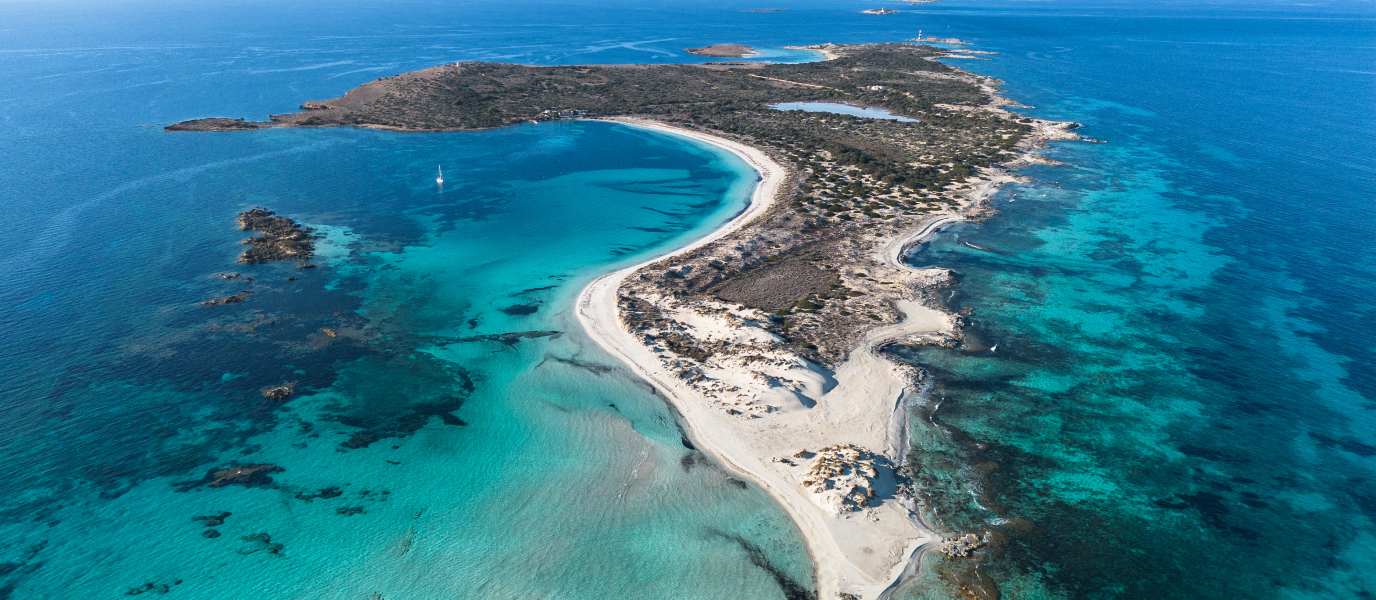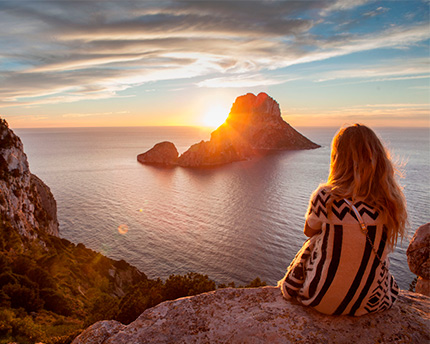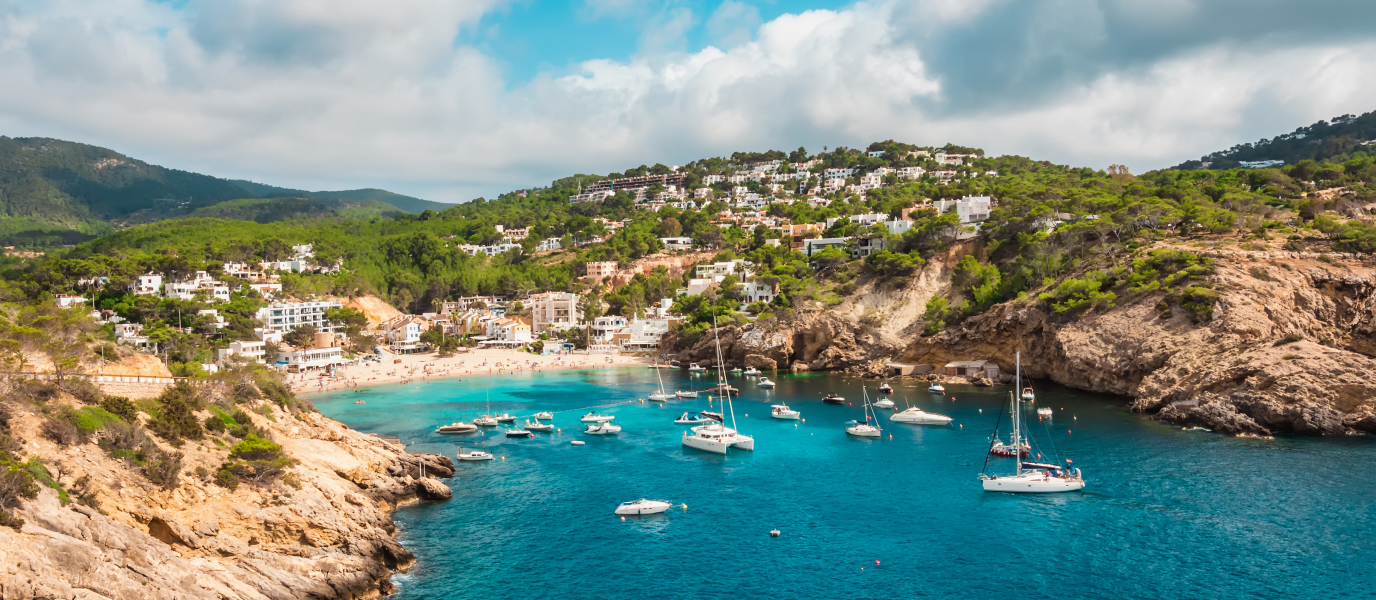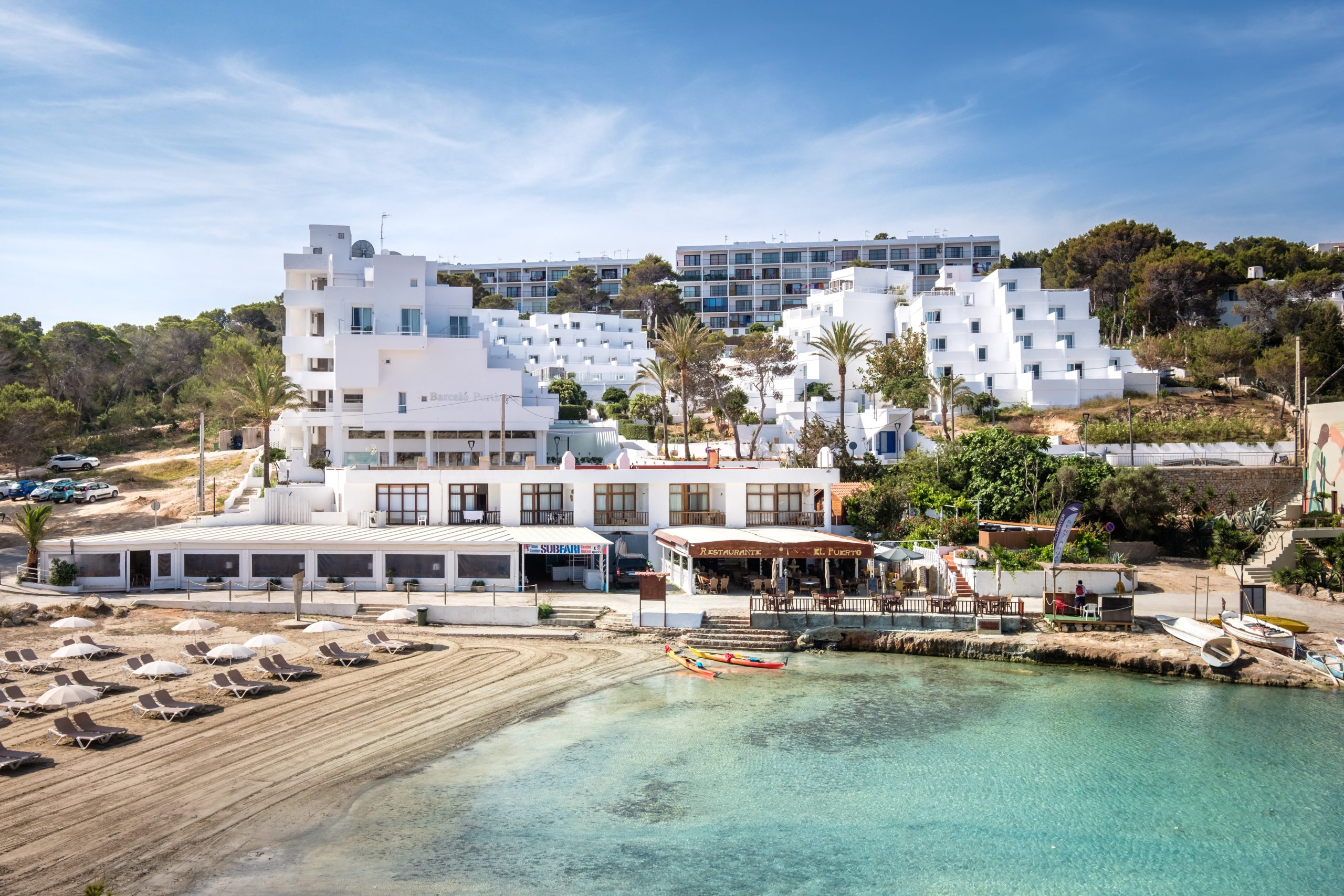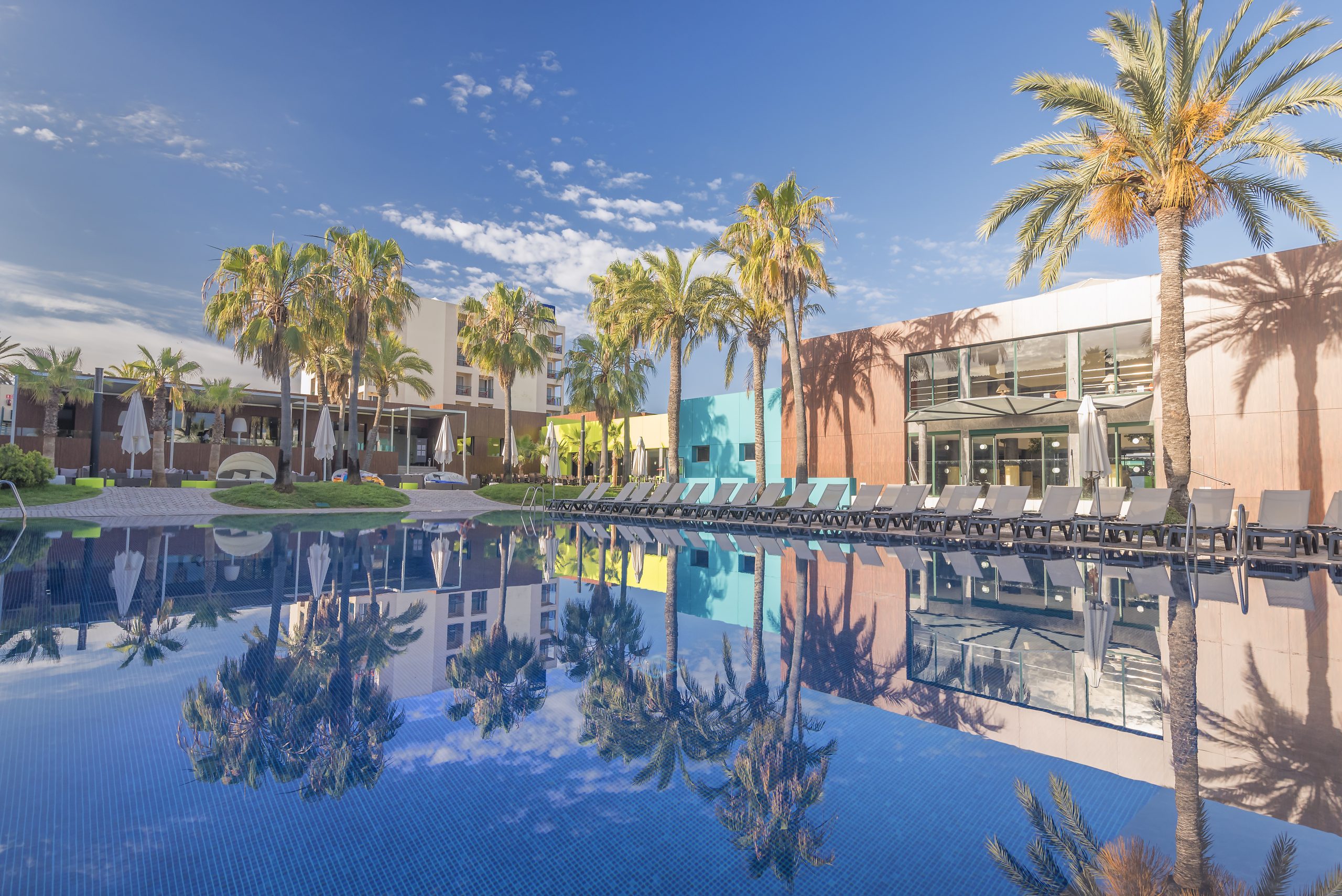One of the nine islands that lie around the perimeter of Ibiza, Es Vedrá definitely draws the most attention from residents and visitors. Located to the south-east of Ibiza, less than 2 km from its coast, this mysterious rocky pyramid is almost 400 m high and makes a huge impression on anyone who comes to see it. Es Vedrá belongs to around thirty Ibizan families and since 2002 it, and neighbouring island Es Vedranell, have been part of the Cala d’Hort, Cap Llentrisca and Sa Talaia Natural Park. This means that visits by the general public are prohibited; however, boat trips around it are permitted. Es Vedrá is also part of Red Natura 2000 because it’s a Special Bird Protection Zone (ZEPA). And once you add the myths, secrets and legends that have surrounded the island since antiquity, visiting it starts to sound like a real adventure. Find out all the details below.
The ecological importance of Es Vedrá
Today, Es Vedrá has become a classic image of wild Ibiza. Despite the inclement conditions, its 80 hectares of limestone rock are home to a wealth of flora and fauna that are often endemic and have great ecological value. For starters, 116 plants have been catalogued and its marine plants are of particular important: the fields of Mediterranean tapewood (Posidonia oceanica) on its soft seabed, for example. Es Vedrá also shelters numerous bird species such as the Balearic shearwater and the peregrine falcon, lizards such as the Ibiza wall lizard and invertebrates, including Helicidae snails. And up until 2016, it was even home to a colony of goats.
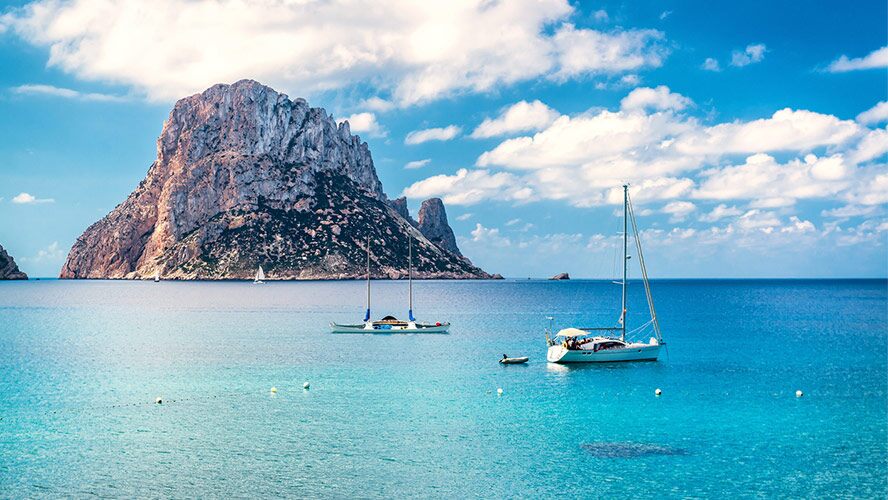
Es Vedrá: Ibiza’s source of legends
Es Vedrá has also inspired countless artists from many different fields. American filmmakers looked to it for inspiration when making South Pacific (1958), while in 1969 French director Barbet Schroeder filmed More right on the island. In 1996 the silhouette of Es Vedrá also appeared reflected behind Mike Oldfield on the cover of his record Voyager. And, of course, plenty of Spanish artists have also turned to Es Vedrá to fire their imaginations.
Vicente Blasco Ibáñez described the island in his novel Los muertos mandan [The Dead Command]: “Before him rose up El Vedrá, remote rock, proud milestone three hundred metres high, which seemed yet more vast in its isolation.”
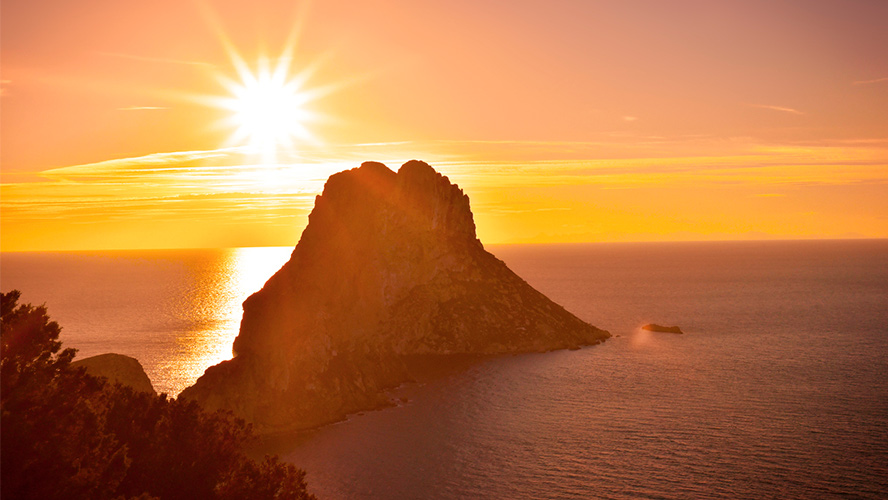
However, one person more than any other gave the island its air of mysticism: Father Francisco Palau, a Discalced Carmelite who lived there in exile during the second half of the 19th century. Voluntarily undergoing recurring periods of famine, years later Father Palau stated in his book Mis relaciones con la Iglesia [My Relationship with the Church] that he had witnessed visions and supernatural experiences of all kinds during his time on the island. Afterwards, a whole series of further legends became attached to Es Vedrá and it was claimed to be the island of the Sirens that tempted Ulysses on his odyssey. It’s also part of the Triangle of Silence, the Mediterranean Bermuda Triangle. However, the real drama arrived in the 70s and 80s when fishermen and pilots swore they had spotted UFOs close to the island.
The best viewpoints for seeing Es Vedrá
Mysterious legends aside, below you’ll find two of the best viewpoints for taking a look at Es Vedrá.
- Cala d’Hort Viewpoint: the fact it’s easy to reach along the PMV-803 and its sea level view have made this small coarse sand beach the most popular spot for seeing Es Vedrá.
- Es Savinar Tower Viewpoint: this old defensive tower was built in 1756 and sits atop an arrow-shaped cliff. It’s the closest point to Es Vedrá and therefore is highly appreciated by visitors. However, it’s a bit more challenging to reach because you have to walk for at least 20 mins. Once there, you can even pay to climb to the top of the tower.
What to see and do near Es Vedrá
If you want to make the most of your trip to see Es Vedrá, you’ll want to know what else there is to see and do near the island. For example, there are two lovely coves to visit to the north of Cala d´Hort: Cala Carbó and Cala Vadella.
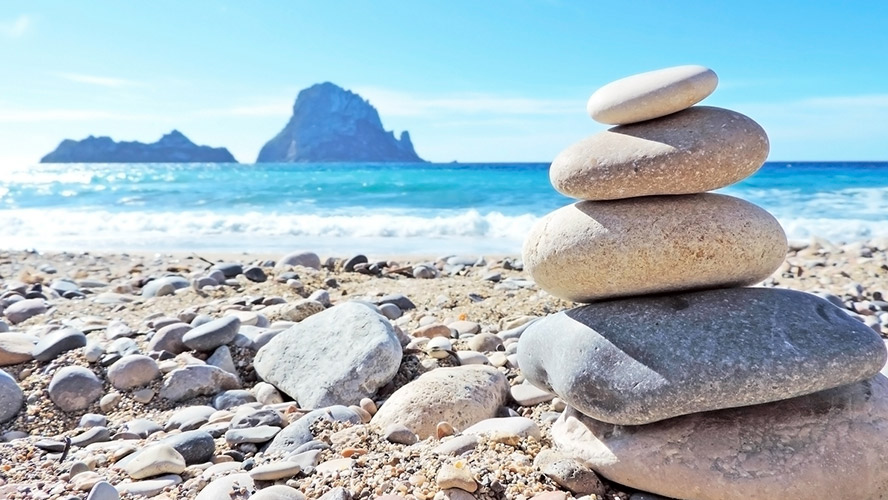
You could also visit Pedrera de Cala d´Hort, an old, abandoned quarry at the foot of the cliff where Es Savinar tower stands. It’s believed that the stone used to build the walls of Ibiza Town were mined here in the 16th century. Today, it’s fascinating to see the huge cuts into the rock and the natural pools that they have formed.
Finally, just 10 km from the island and heading back towards Ibiza port, you could also visit the Phoenician settlement of Sa Caleta, one of the most important recent archaeological discoveries in the Balearic Islands. Made a UNESCO World Heritage Site in 1999, this site is home to the remains of the oldest town in Ibiza, dating from 8 BC.




































































